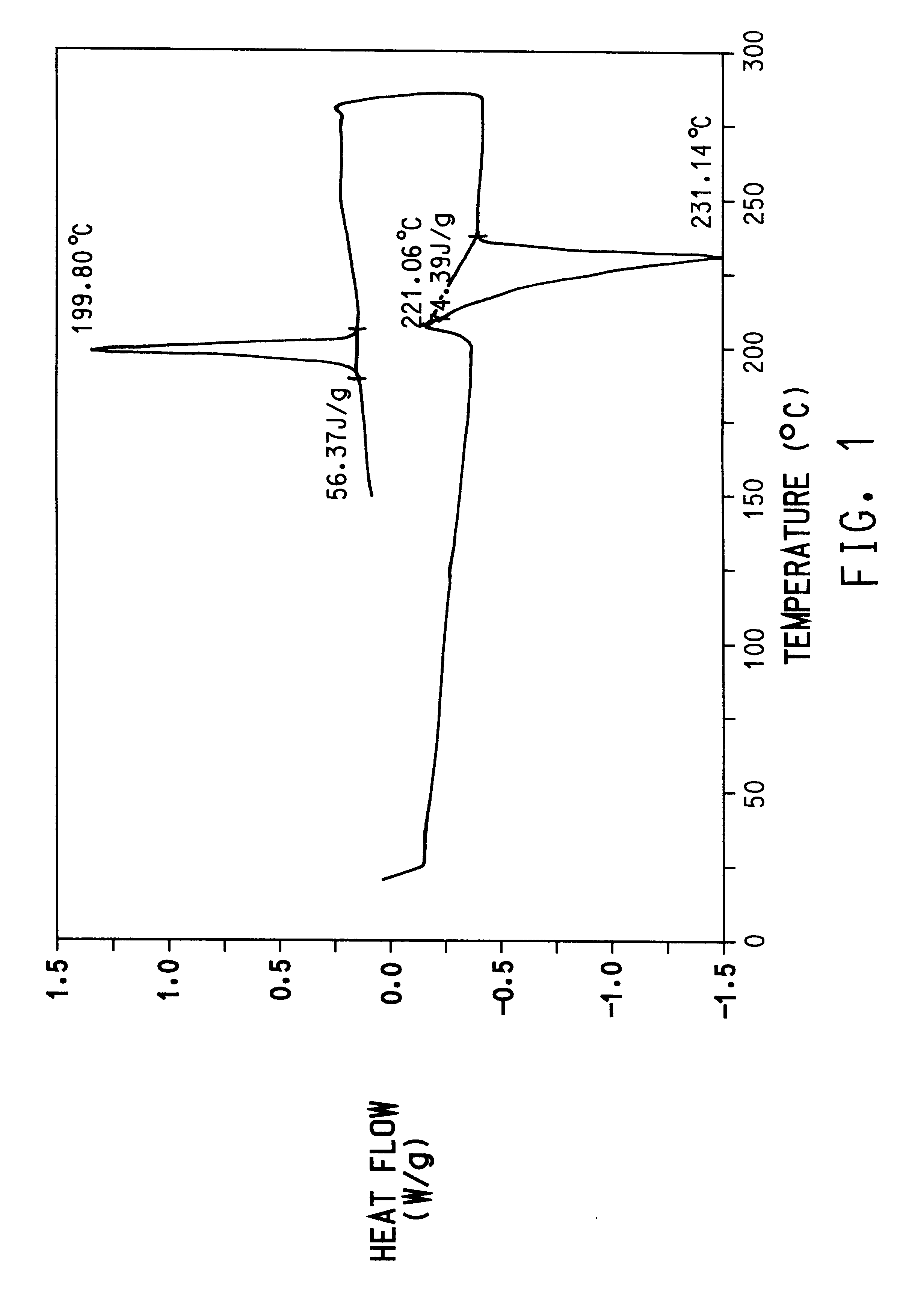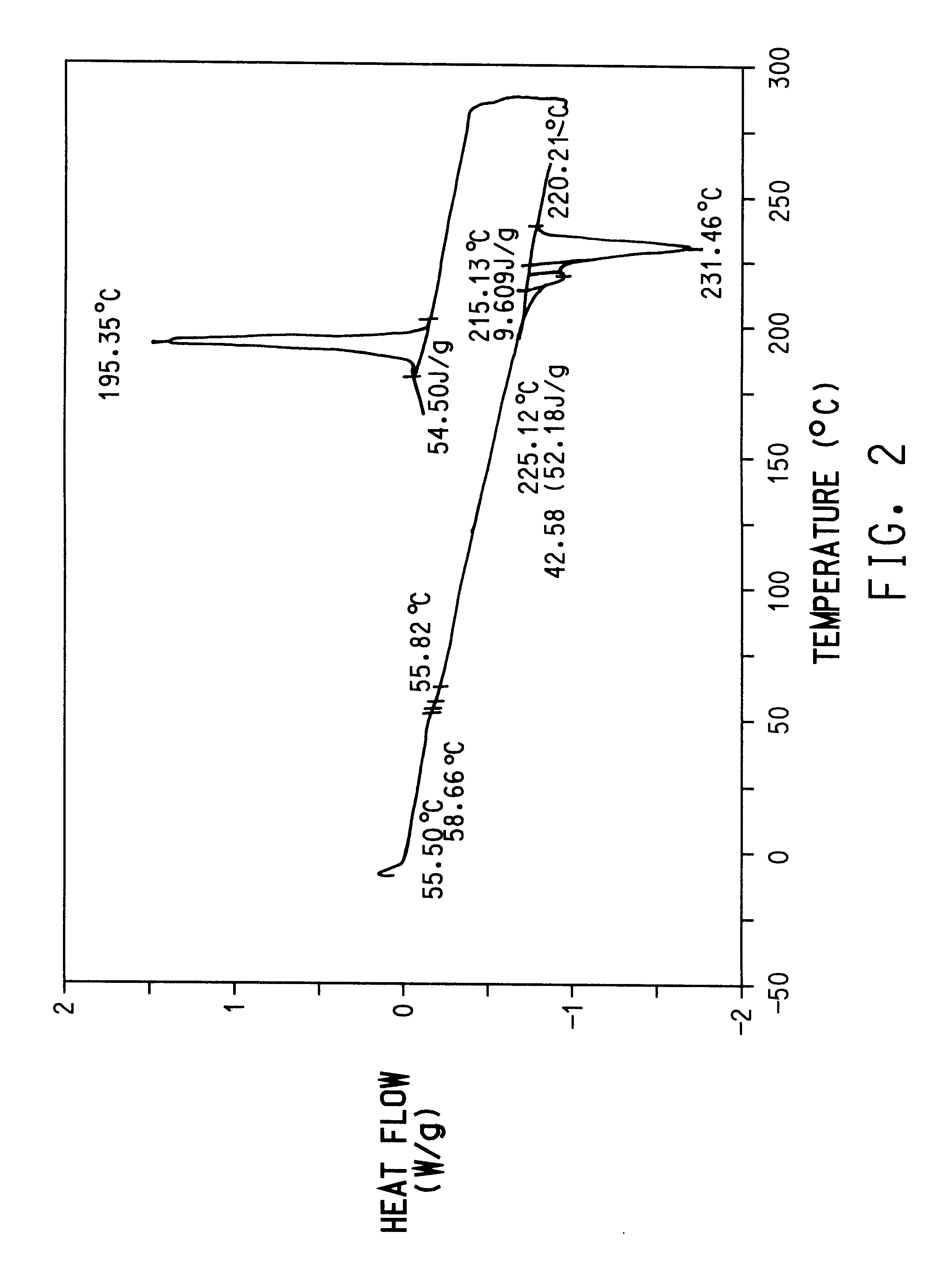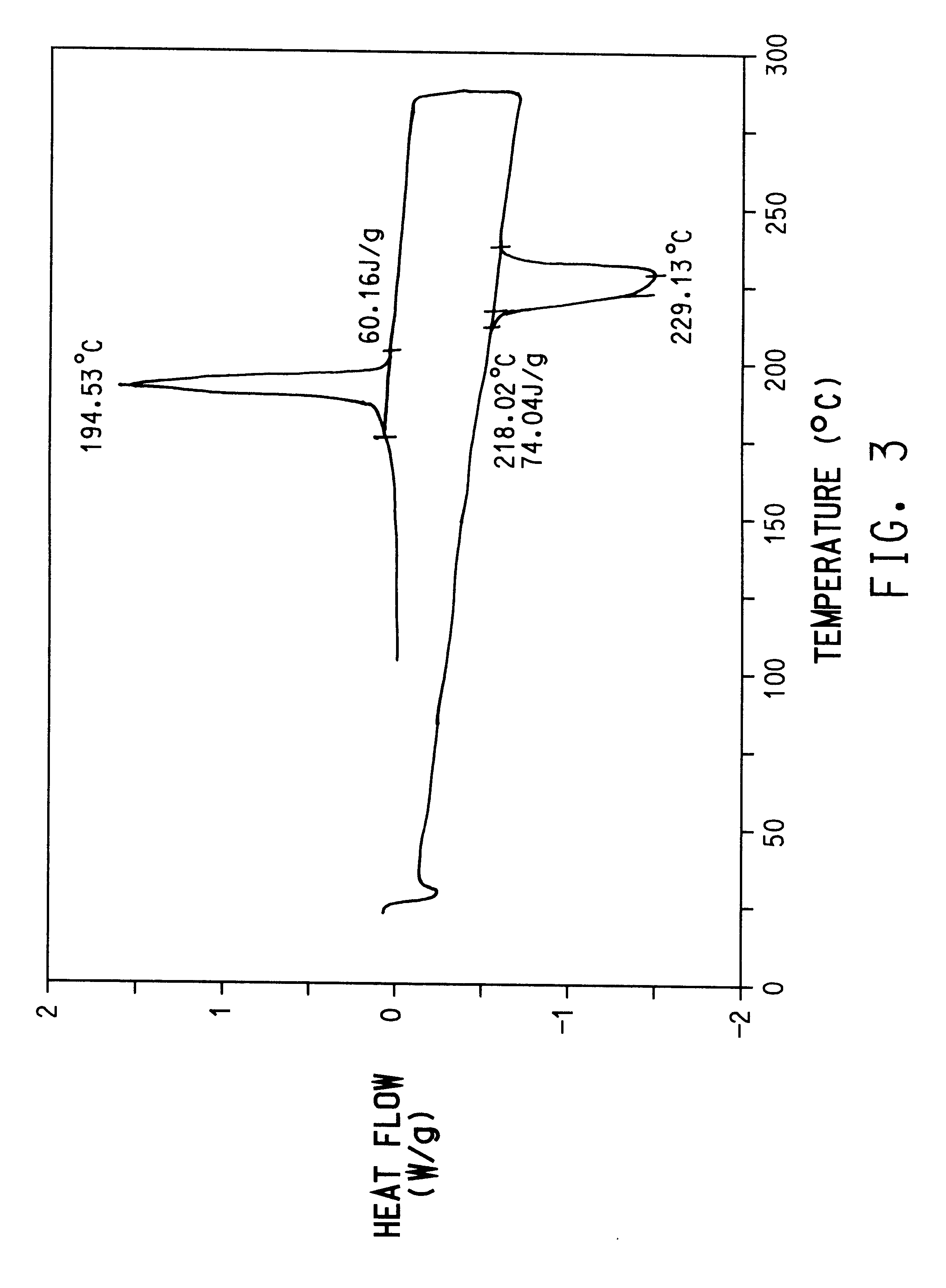Nucleating agent for polyesters
a technology of polyester and nucleating agent, which is applied in the field of polyester nucleating agent, can solve the problems of many of the disclosed salts and small nucleating
- Summary
- Abstract
- Description
- Claims
- Application Information
AI Technical Summary
Problems solved by technology
Method used
Image
Examples
example 1
Preparation of poly(trimethylene terephthalate) from dimethyl terephthalate (DMT) and 1,3-propanediol with mono-sodium terephthalate.
A 250 ml flask equipped with a stirrer and distillation column was charged with 58.5 g of dimethyl terephthalate (E. I. du Pont de Nemours and Company, Wilmington, Del.) and 41 g of 1,3-propanediol (Degussa A G, Wolfgang, Germany) for a mol ratio of 1,3-propanediol:DMT of 1.8:1. The flask was then purged with nitrogen and the contents of the flask were heated. When the temperature inside the flask reached about 150.degree. C. and all of the dimethyl terephthalate had melted, the stirrer was started. When the temperature reached 210.degree. C., 18.4 mg of Tyzor.RTM. TPT (DuPont, Wilmington, Del.) was added as a catalyst. The temperature was held at 210.degree. C. for approximately 80 minutes and the methanol generated was removed as a liquid condensate by distillation.
After evolution of methanol had ceased, indicating complete conversion of dimethyltere...
example 2
Preparation of poly(trimethylene terephthalate) from terephthalic acid (TPA) and 1,3-propanediol with mono-sodium terephthalate.
A 250 ml flask equipped with a stirrer and distillation column was charged with 66.1 g of terephthalic acid (TPA), 49 g of 1,3-propanediol for a mole ratio of 1,3-propanediol:DMT of 1.8:1, and 17 mg of butylstannoic acid (Witco Corporation, Allentown, Pa.). The flask was then purged with nitrogen and the stirrer was started. The contents of the flask were heated to 210.degree. C. and held for 4.5 hours until a clear solution was obtained. Water generated during the esterification reaction was removed as a liquid condensate by distillation.
After a clear solution was reached, 0.2 g of mono-sodium terephthalate (calculated to give 0.245 wt % in fmal polymer) and 24.3 mg of Tyzor.RTM. TPT were added. The resulting monomer, bis(3-hydroxypropyl)terephthalate, was polymerized in the same vessel at a temperature of 250.degree. C. and pressure of 0.5 mmHg. The poly(...
example 3
Preparation of poly(trimethylene terephthalate) from dimethyl terephthalate (DMT) and 1,3-propanediol with mono-sodium terephthalate.
A 25 gallon autoclave was charged with 125 lbs. of dimethyl terephthalate (DMT), 68 lbs. of 1,3-propanediol for a mole ratio of 1,3-propanediol:DMT of 1.4:1 and 18.2 g Tyzor.RTM. TPT. The temperature was raised to 210.degree. C. and held for 2.5 hours. Methanol generated was removed as a liquid condensate by distillation.
After evolution of methanol had ceased, the resulting monomer, bis(3-hydroxypropyl) terephthalate, was transferred to a different clave and polymerized along with 250 g of mono-sodium terephthalate (calculated to give 0.41 wt % in final polymer) at a temperature of 250.degree. C. and a pressure of 0.6 for 3.5 hours. The obtained poly(trimethylene terephthalate) resin was pelletized and solid phased (2 hours at 180.degree. C. and for 7 hours at 205.degree. C. The intrinsic viscosity of the final polymer was 1.1 dl / g, melting point of 23...
PUM
| Property | Measurement | Unit |
|---|---|---|
| Fraction | aaaaa | aaaaa |
| Angle | aaaaa | aaaaa |
| Angle | aaaaa | aaaaa |
Abstract
Description
Claims
Application Information
 Login to View More
Login to View More - R&D
- Intellectual Property
- Life Sciences
- Materials
- Tech Scout
- Unparalleled Data Quality
- Higher Quality Content
- 60% Fewer Hallucinations
Browse by: Latest US Patents, China's latest patents, Technical Efficacy Thesaurus, Application Domain, Technology Topic, Popular Technical Reports.
© 2025 PatSnap. All rights reserved.Legal|Privacy policy|Modern Slavery Act Transparency Statement|Sitemap|About US| Contact US: help@patsnap.com



